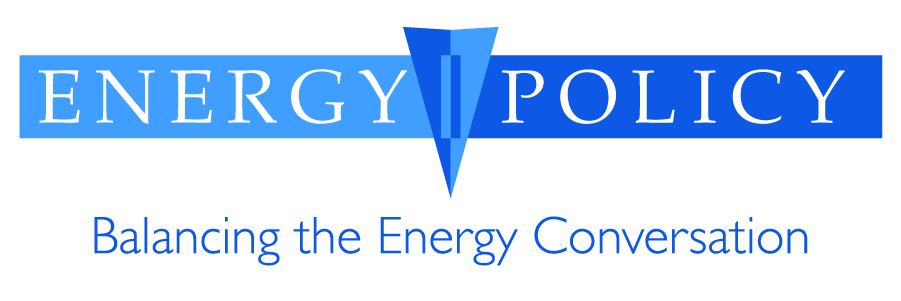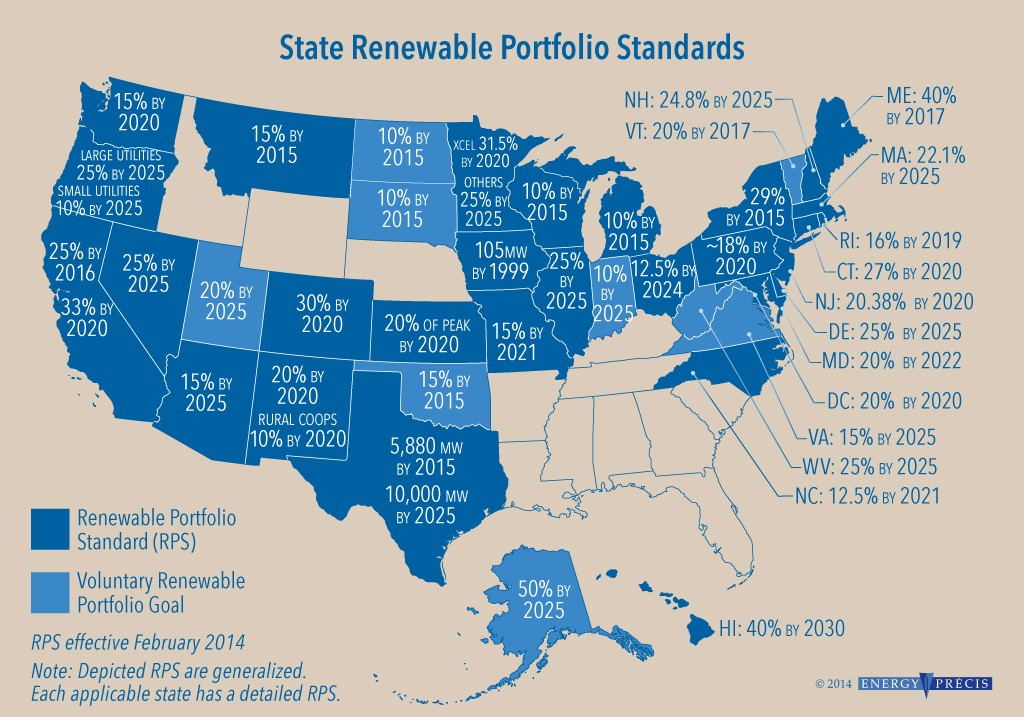By Douglas C. Sandridge, EnergyPolicyUs.org
February 18, 2015
Part 2 of 5 – CLEAN ELECTRICITY & THE RELIABILITY IMPERATIVE
Last week, Part 1 of this series examined why it is unlikely that we can eliminate the use of fossil fuels anytime soon. Notwithstanding the fact that fossil fuels will remain a critical component of the U. S. energy portfolio, our society is duty-bound to continue vigorously pursuing a cleaner energy future. “Clean” electricity is one of the cornerstones of the emerging “clean energy paradigm.” How to generate and deliver large volumes of clean, affordable, safe and reliable electricity is an epochal issue. In order to encourage innovation and progress in renewable energy use, many states have enacted mandatory Renewable Portfolio Standards (sometimes referred to as Renewable Electricity Standards) which require electric utilities in such states to produce certain minimum amounts of electricity from renewable sources. Renewable Portfolio Standards were pioneered in Iowa, Minnesota and California and began to emerge from state legislatures by the mid-1990’s. Currently 29 states and the District of Columbia have adopted mandatory Renewable Portfolio Standards and another 8 states have adopted Renewable Portfolio Goals. (Note: West Virginia has recently repealed its RPS)
In order to comply with these mandatory Renewable Portfolio Standards and voluntary Renewable Portfolio Goals, it is necessary for electric utility companies to develop a growing portfolio of renewable energy including wind, solar, geothermal and other renewable resources. Electricity generated from wind is regarded by many as one of the most practical and cost effective methods for expanded use of renewable resources. In 2013, wind was used to generate 4.13% of the total electricity generated in the United States. Wind is certainly not immune from disamenities (incl. reliability, esthetics, Wind Turbine Syndrome, environmental concerns, etc.). Nevertheless, wind generated electricity will almost certainly remain one of the best options for expanding the use of renewable energy during the next decade.
In most situations, there is only a single electrical connection facilitating delivery of electricity into homes and businesses. Accordingly, utilities which physically deliver electricity directly to consumers have been designated as monopolies in most jurisdictions. In order to protect the public from the natural abuses of monopoly enterprises, electric utilities are customarily regulated by state public utility commissions (PUCs). Historically, PUCs have set rates and standards for electricity service provided to homes and businesses. PUCs have traditionally placed great emphasis on the safety and reliability of electricity delivered to the customers which are protected by their PUC oversight. In fact, the importance of safety and reliability to PUCs is difficult to overstate. Safety of electricity is paramount in all situations. Reliability of electricity is almost equally important and particularly important for many critical applications such as intensive care units, neo-natal facilities, air traffic control centers and other public safety institutions. Likewise, U. S. homeowners and business consumers have also traditionally placed a high-value on safety and reliability of electricity as well as it affordability; however, consumers increasingly expect their electricity to also be clean and environmentally responsible. As such, electric utilities are faced with the daunting (and often unappreciated) task of balancing environmental concerns with affordability of electricity without sacrificing safety or reliability (not to mention delivering a return on investment to their shareholders). Therefore, while we collectively pursue the holy grail of clean and affordable electricity, the electric utilities will be increasingly challenged to do so without sacrificing safety or reliability! Part 3 of this series Wind’s Achilles Heel & the Cost of Reliability will appear February 25th on EnergyPolicyUs.org.



